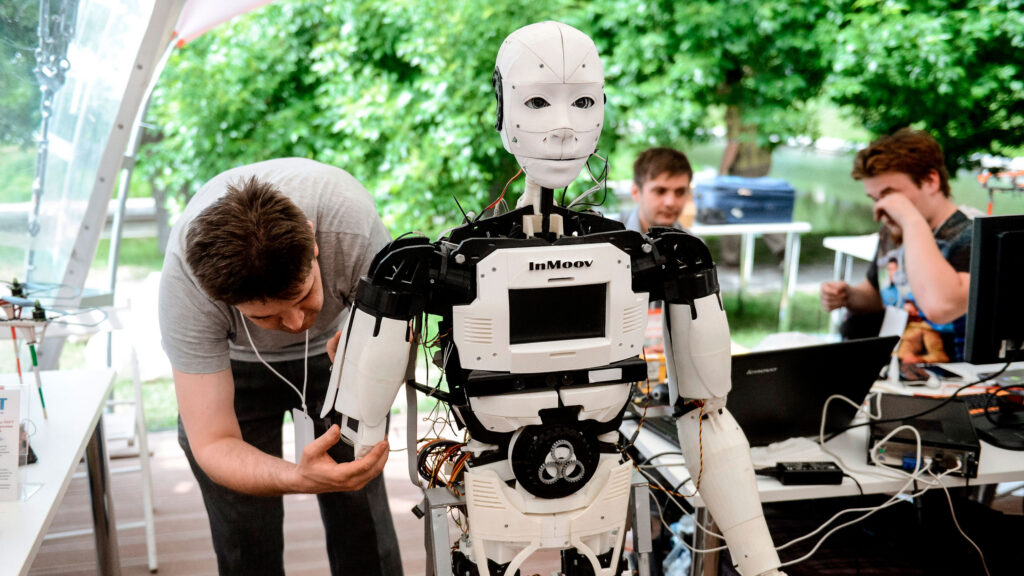Robotics has become one of the fastest-growing fields, merging engineering, computer science, and artificial intelligence. Leading institutions worldwide are shaping the next generation of experts through advanced research facilities and specialized coursework.
Typical entry requirements for a robotics degree at leading institutions

Admission to top-tier universities where you can enroll in a robotics course is competitive, with stringent academic and technical benchmarks. Applicants are usually expected to present a strong foundation in mathematics, physics, and programming. For instance, Carnegie Mellon University expects prospective students to have completed calculus, linear algebra, and object-oriented programming before entry. Many European programs, such as ETH Zurich or TU Munich, also demand proof of proficiency in languages of instruction—usually English or German—via TOEFL or IELTS, especially for non-native speakers. Some universities, like Imperial College London, also require a personal statement and reference letters demonstrating the candidate’s passion for robotics and relevant project experience.
Applicants to master’s-level robotics programs often need a bachelor’s degree in engineering, computer science, or a related discipline. GRE scores are still required at some U.S. institutions, like Georgia Tech, while others have phased them out. Additionally, portfolios showcasing hands-on robotics work—such as autonomous vehicles, sensor integrations, or drone programming—can make an applicant stand out.
What robotics students study: key components of the curriculum
The curriculum structure across universities where you can enroll in a robotics course typically blends mechanical design, control systems, artificial intelligence, and machine learning. For example, Stanford University’s robotics track within its computer science department includes courses like “Robot Perception and Decision-Making” and “Experimental Robotics.” Massachusetts Institute of Technology (MIT) offers lab-intensive classes that challenge students to build, test, and program physical robots from scratch.
Coursework often includes modules on embedded systems, kinematics, path planning, and human-robot interaction. At the University of Tokyo, students work with humanoid robots such as HRP-5P, integrating both hardware and software. Meanwhile, at institutions like Seoul National University, curriculum emphasizes real-world applications in autonomous driving and manufacturing automation.
Projects and collaborative assignments are core components, often tied directly to industry research. By the final year, many programs require a capstone project or thesis. Writing in context plays a role here—students must clearly articulate their research and outcomes, often supported by technical stationery and formal documentation standards in engineering writing.
How to apply to top robotics courses around the world
Navigating the application maze for universities where you can enroll in a robotics course demands more than just filling out forms. Deadlines vary widely—some institutions like Stanford close applications as early as December, while others such as Nanyang Technological University accept them until March or April. Applicants must follow a meticulous sequence to avoid costly errors and missed opportunities. Here’s a general structure most top-tier programs follow:
Register an online application profile via the university’s official portal.
Upload scanned transcripts, diplomas, and degree certificates—many require certified English translations.
Provide standardized test results, such as the GRE or language proficiency exams like TOEFL/IELTS.
Write a personal statement or statement of purpose, tailored to the research focus and lab strengths of the chosen program.
Request two to three letters of recommendation, ideally from supervisors or professors with relevant technical expertise.
Include a portfolio, where applicable, showcasing relevant engineering or robotics projects.
Pay the application fee, which can range from $50 to over $120 depending on the institution.
Submit before the deadline, double-checking all documents are uploaded properly.
The role of writing in context for personal and research statements
A bland essay can sink an otherwise stellar application. Universities where you can enroll in a robotics course place significant weight on your ability to express clear academic intent. Admissions committees look for coherent narratives that link past academic experience, current interests, and future goals. Writing in context means grounding every paragraph with specific references—mentioning professors you hope to work with, referencing labs doing cutting-edge work like ETH Zurich’s Autonomous Systems Lab, or citing a paper that shaped your academic path. Avoid generalities. Instead of saying “I’m passionate about robotics,” show it through a description of your DIY robotic arm project coded in Python and controlled via Raspberry Pi.

High-quality stationery and document presentation in applications
Even in a digital-first process, the presentation of physical documents still matters, especially when applying to universities in regions that request mailed hard copies, like some Japanese or South Korean institutions. Quality stationery—thick, acid-free paper, professional printing, and well-organized folders—can subtly communicate attention to detail. Handwritten forms (where still required) should be penned with clean, smudge-proof ink and consistent formatting. For printed statements and recommendations, use standard A4 or US Letter size, 100–120 gsm paper, with uncluttered headers and clear serif fonts like Garamond or Times New Roman. While this might seem like a minor detail, in a field where precision and structure rule, your choice of stationery becomes part of your first impression.
Top universities in the United States offering robotics programs

The U.S. remains a heavyweight in robotics education, with several institutions consistently ranked among the best globally. Carnegie Mellon University, widely recognized for its Robotics Institute, provides specialized research tracks in fields like robot learning and autonomous systems. At the Massachusetts Institute of Technology (MIT), students benefit from hands-on lab experiences and collaboration with the Computer Science and Artificial Intelligence Laboratory (CSAIL). Stanford University integrates robotics into its AI-focused computer science degree, offering courses that cross traditional departmental lines. Georgia Institute of Technology also stands out, with its Institute for Robotics and Intelligent Machines providing real-world project exposure with companies like Amazon Robotics. These universities where you can enroll in a robotics course combine theoretical depth with strong ties to industry, making them highly competitive.
Leading robotics programs in Europe and Asia worth considering
Across the Atlantic, ETH Zurich in Switzerland has become a magnet for engineering talent. Its robotics curriculum is anchored in precision mechanics and algorithm development, producing graduates who frequently land in robotics startups and autonomous tech firms. In Germany, the Technical University of Munich (TUM) offers a focused Master’s in Robotics, Cognition, Intelligence that includes industry-embedded internships. Meanwhile, the University of Oxford and Imperial College London both offer pathways into robotics via their engineering science departments, with research spanning surgical robots to aerial drones.
In Asia, the University of Tokyo and Seoul National University lead the pack, with extensive robotics laboratories and collaboration with manufacturing giants. At KAIST in South Korea, students work on humanoid robots and autonomous vehicles, often publishing in IEEE conferences before graduation. These programs are highly structured, with mandatory research rotations and multi-semester design projects.
Emerging robotics hubs offering strong academic training
A number of lesser-known but rapidly advancing institutions are gaining ground. The University of Technology Sydney in Australia, for example, runs a cutting-edge robotics research center focused on smart infrastructure. In India, IIT Kanpur and IIT Hyderabad offer B.Tech and M.Tech tracks with modules in robot vision, control systems, and embedded electronics. Canada’s University of Toronto and University of British Columbia are investing heavily in AI-integrated robotics systems. These universities where you can enroll in a robotics course may not always top global rankings, but they produce skilled graduates and innovative research. Their lower tuition costs and access to regional tech industries make them strong contenders for international applicants.
Robotics degree requirements and academic structure by institution
While course names and department labels may differ slightly across regions, the foundational components and expectations of leading programs remain relatively aligned. Below is a comparison of entry conditions and curriculum components for top universities where you can enroll in a robotics course.
| Carnegie Mellon University | GRE required, strong programming background, GPA > 3.5 | Robot kinematics, embedded systems, machine learning | Personal robotics, autonomous drones |
| ETH Zurich | Bachelor’s in STEM, high GPA, German or English proficiency | Mechanics, control theory, real-time systems | Autonomous mobility, robotic arm simulation |
| Stanford University | No GRE, extensive coding experience preferred | AI for robotics, reinforcement learning, perception | SLAM systems, surgical robotics |
| Technical University of Munich | TOEFL/IELTS required, prior academic focus on engineering | Computer vision, humanoid robotics, ethics in AI | Robotic exoskeletons, cooperative robotics |
| University of Tokyo | Research background favored, Japanese proficiency optional | Hardware design, control algorithms, neural interfacing | Android robotics, prosthetics research |
| KAIST | GPA > 3.2, programming in C/C++ expected | Multi-agent systems, mechatronics, actuator systems | Disaster response robotics, self-driving vehicles |
| Imperial College London | First-class undergraduate degree, project experience valued | Logic systems, embedded AI, autonomous navigation | Drone control systems, swarm intelligence |
| Georgia Institute of Technology | GRE optional, strong maths and physics foundation | Robot design, human-robot interaction, optimization | Industrial robotics, wearable devices |
| University of Toronto | English proficiency mandatory, portfolio boosts applications | Systems integration, dynamic modeling, robotic software | Visual servoing, mobile robotics |
This table gives a side-by-side glance at how expectations vary and where strengths lie. From high-end machine learning labs at Stanford to the real-world industry collaboration at TUM, these programs reflect the global range of opportunity within robotics education. Applicants aiming for universities where you can enroll in a robotics course should weigh these variables alongside personal research interests and geographic preferences.
